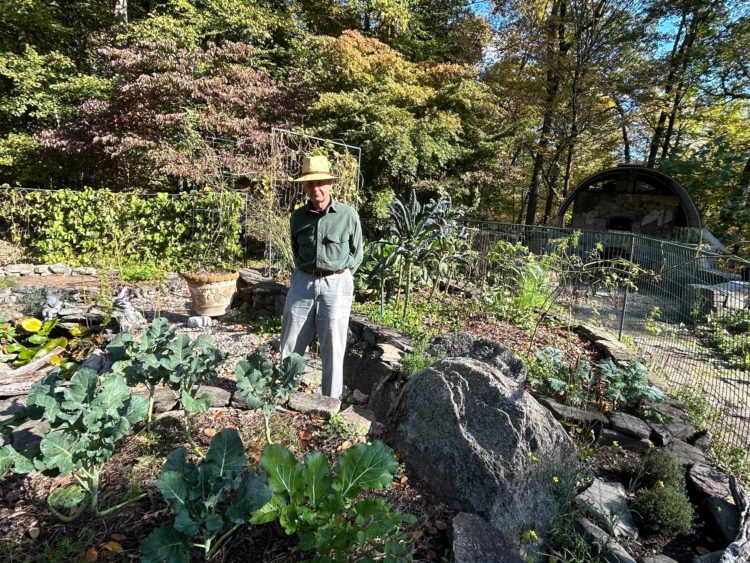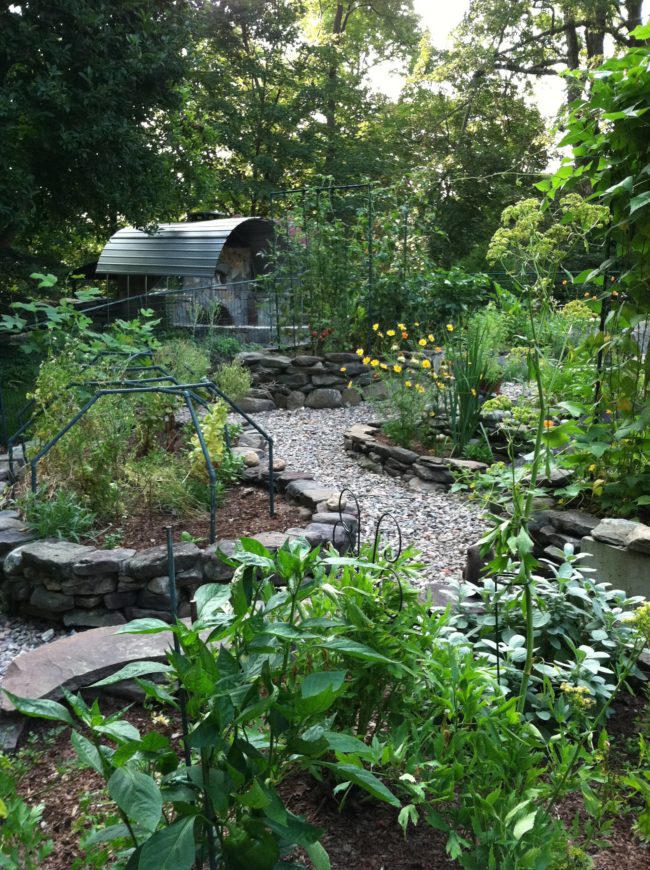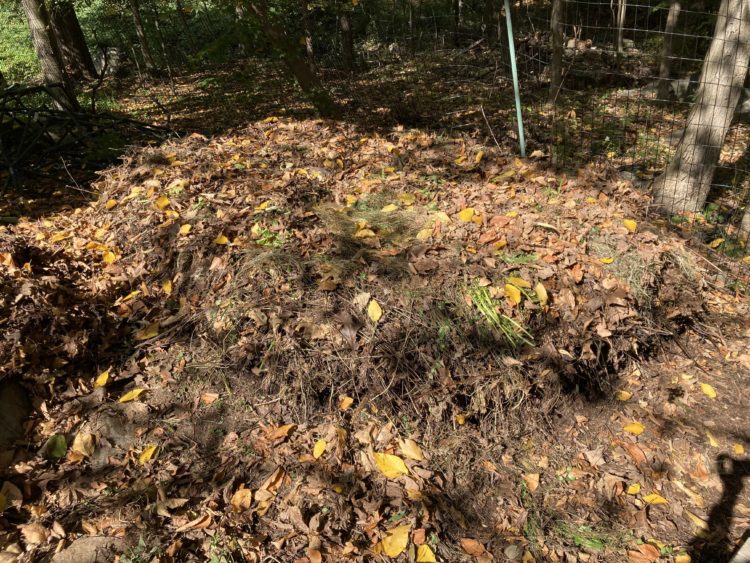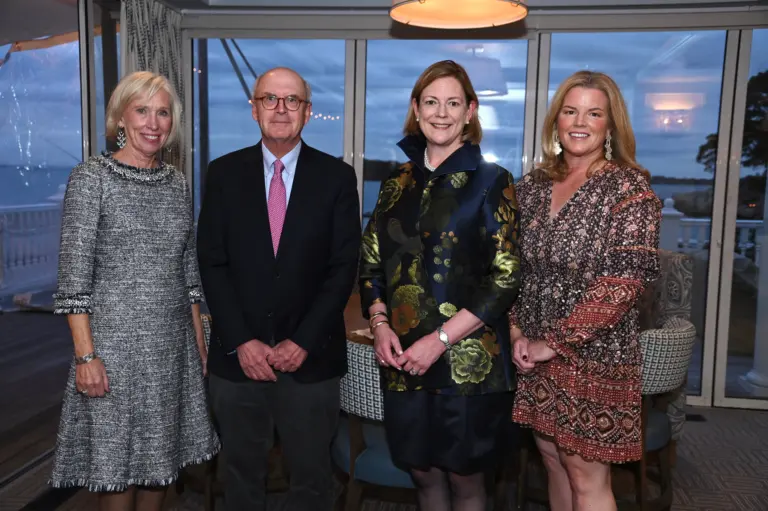
By Anne W. Semmes
Naturalist and biologist Jim Carr of Cos Cob tells the story of how he and his wife Jean (also a biologist) transformed their newly bought one-acre property off Stanwich Road that early spring some 30-plus years ago. Located next to a 400-acre nature preserve burgeoning with wildlife, their property was missing it all. The answer came with the arrival of “a tank truck rolling down the driveway.” The driver presented Carr with the former property owner’s contract “to spray a cocktail of pesticide, herbicide, fungicide, fertilizer.” With Rachel Carson’s “Silent Spring” witness in his mind’s eye, Carr said, “No thanks. I’m going to be doing things differently.”
“So, I stopped the leaf blowing,” he tells, “and I got rid of the lawn guy. So, basically what we do is we leave the grass clippings to go onto the grass.” (And his lawn is rich and verdant.) “The fall leaves come down, and the annual plants die and fall to the earth,” he continues, “And those organisms decompose into humus, which is compost. And then in the spring, that provides the nourishment for the lush spring growth.”
“So, I have a giant composting operation on the lawn,” he confirms, “and you see, it produces this beautiful fertile soil. So, that was the first principle. The second principle is with all these flowers, it attracts beneficial insects that prey on the pest insects,” and birds are “very important. I have Carolina Wren nesting boxes. So, the Wrens spend the summer season going back and forth into my garden, getting pests to feed to their young, so I don’t have to use any pesticides on my vegetable garden.”
Carr’s vegetable garden includes an impressive variety including Italian sweet peppers, Lacinato kale, carrots, and collard greens. “Collard greens are probably the most nutritious vegetable you can eat,” he notes. “My wife and I believe that diet is very important to health. So, we want to control our food supply. We want to know how it’s grown. So, it’s grown in just compost, no fertilizer, no pesticide.”
“This place is just alive with beneficial creatures,” he says. “We have a lot of Robins because the soil is full of earthworms. So that’s one of the principal food sources…We have Baltimore Orioles, we have of course all the Blue Jays, Cardinals, Woodpeckers… And then we have numerous species of butterflies, particularly Monarch, because we grow a lot of milkweed.”
“And there are a lot of beneficial insects, ladybugs, praying mantis,” he continues. “And they keep the garden clean of pests. So, this is basically ecological gardening. So, we have an ecological landscape and ecologically managed flower gardens and vegetable gardens.”
And it is this ecological gardening that Jim Carr will be offering hands on in an Ecological Gardens & Landscapes Workshop series that started on October 1 with a general introduction, with the next upcoming on Sunday November 5, from 1-3 p.m. at Greenwich Audubon. The series is being co-led with Andy Chapin, former Greenwich Audubon Land Steward and will continue the first Sunday of each month excluding February and July and ending on August 4 of 2024.
And on that last Sunday afternoon workshop Carr will concentrate on composting. His backyard is rich with compost piles. One large one is layered through time, another is freshly built. “You’re supposed to heat up the compost pile,” he tells, “But I don’t do that – it’s a huge amount of work, and it doesn’t produce the best compost. I compost the way nature does at ambient temperature. Underneath the leaves is a pile that I had used this year for the garden.”
With his new compost pile building, he’s layering fall leaves with weeds. “We hand pull all the weeds. They’re a beautiful compost ingredient. Very important because the soil organisms are converting all that dead plant material into compost. And the soil organisms, the green matter provides nitrogen…and the leaves are full of carbon… So that provides the energy needs. So, it’s complete nutrition for the soil organisms.”
Carr took his homegrown concepts for ecological garden and landscaping to the New York Botanic Garden, beginning his teaching there in 1996 for the next 20 years. During that time, he got involved with Christ Church Greenwich introducing ecological landscaping to its campus through a friend Liz Norfleet. He also played a part in a symposium Norfleet organized at the Greenwich Library featuring Dr. Barry Boyd, chief oncologist at Greenwich Hospital on the health hazards of landscape and garden chemicals. Carr had explained “how properties can be managed quite well without garden chemicals.”
Carr is motivated to get homeowners to adopt his homegrown concepts of ecological gardening and landscaping having seen “an alarming decline in insect and bird populations. One of the big reasons is the spread of suburbia,” he tells, how homeowners “adopt traditional landscaping methods, which creates a landscape that’s either unsupportive or actually hostile to birds and beneficial insects. This is one of the main causes of the decline. We have to reverse that. How do we do that? We convince people to manage their property the easiest way.”
“It’s the easiest way,” he says, “because it depends more on what you don’t do than what you do. You stop all this counterproductive stuff, leaf blowing chemicals. Let mother nature do the work. So, if we can start getting more and more properties to do that, this creates a habitat for beneficial wildlife. If we can start doing that, we begin to build a critical mass of habitat. We can start to reverse all of this environmental damage that’s been going on. That’s the whole point of the Ecological Gardens & Workshop series.”
Following the November 5 workshop of “How to Create an Ecological Garden,” will be “How to Grow Plants from Seed Part 1,” followed by “How to Grow Plants from Seed Part 2,” then “Protecting Plants Ecologically,” followed by “The Needs of Plants & How to Satisfy Them Ecologically,” then “Preparing Soil & Planting,” followed by “How to Create an Ecological Garden Pond,” and lastly, the “Composting Workshop.”
The workshops say Carr will be held outside through December, then inside during the “really cold weather, then outside from early spring. We start with talking theory, then we go outside to practice. We tell people that they need to use mostly native plants because that supports the wildlife. Also, not only native, but open pollinating as opposed to hybrid because the open pollinator will self-seed. Most of these plants,” he says looking around his garden, “we didn’t plant, we started them.” But now, “They’ve self-seeded. They planted themselves. So again, it’s the easiest way to garden.”
To register for the Ecological Gardens & Landscapes Workshop series – $25 for each program, visit greenwichcenter@audubon.org or call 203-869-5272.






